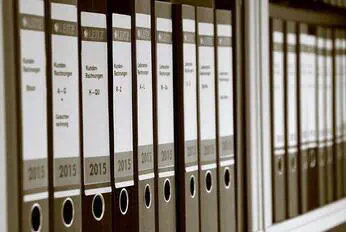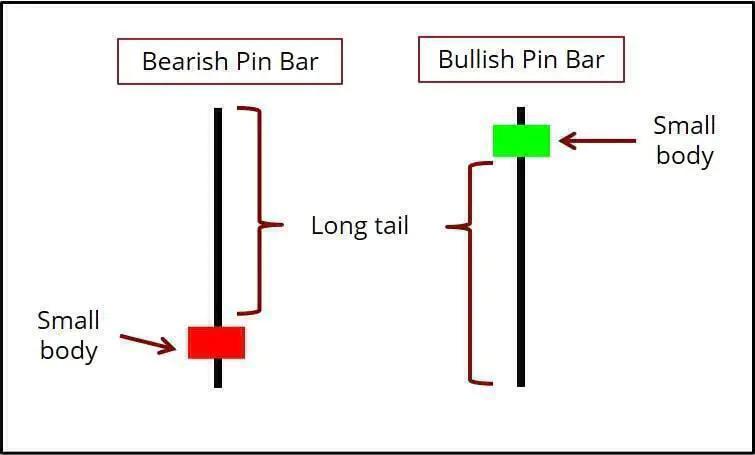How to Keep Trading Records as a Discretionary Price Action Trader
By Galen Woods ‐ 7 min read
Trading records is the key to improving your trading performance. Recording your real-time analysis is critical for the discretionary price action trader.
Most traders agree that trading records and journals are essential to improving performance and boosting profits. However, things get fuzzy when it comes to the specific pieces of trading information to record and how to do it.
In this guide, you’ll learn exactly how to keep trading records that are beneficial to you as a discretionary trader.

What should you record?
Here are some common ideas:
- Some traders think that the trading records exported from their brokers are enough.
- Others might record their reasons for taking each trade.
- Some might record how they felt during each trade to manage their emotions.
- Some traders even track their physiological responses, like their heart rate and body temperature.
To arrive at the appropriate answer, we must look at the goal of keeping trading records. So what is our aim?
We aim to improve our trading results.
We can do this by refining the source of our trading edge. And for discretionary traders, our edge is determined by our trading style.
Most price action traders trade with discretion. This is also how I trade. Hence, here, I will focus on what a discretionary price action trader should record and how to do so.
This trading style has two main components:
- Price action
- Discretion
Hence, your records should revolve around these two themes.
Recording Your Price Action Observations
As price action traders, we derive our trading edge by observing price movement.
Hence, to improve our trading performance, price action should be a cornerstone in our trading records.
This means we need to go beyond recording basic trade information like the profit/loss and time of entry/exit.
Start recording your price action analysis.

I am not referring to the price action reasons behind each trade. (For instance, I took this trade because of a Pin Bar.)
I am referring to a constant analysis of the market’s price action flow, regardless of whether you are considering a trade. Think of it as a market commentary to yourself.
A simple example goes like this.
The day opens with a gap down. It is trying to make a bullish push but is rejected by the low of the last session. A bearish Pin Bar forms, but the top shadow is not prominent. I expect the market to fall. The market is falling now. It makes a new low. A reaction should be coming soon…
It is an ongoing analysis that encompasses price structure, patterns, and speed. In addition, it includes your description of price action and your expectations of it.
There are two main benefits to recording your real-time market analysis.
Over time, these trading records will be the basis of your trading rules.
For instance, your records show that after several Doji-like bars, it is better to abstain from trading. This is a valuable conclusion you can use to improve your trading plan.
Also, recording your analysis in real-time will help you avoid hindsight bias.
This common bias causes traders to overestimate their trading skills. With real-time recording, you will come to terms with your actual ability to read price action in real-time. You will not fall into the trap of looking at historical charts and thinking that you know how to find the perfect trade each time.
If you’ve truly mastered the skill of analyzing price action, these real-time records of your analysis will be the proof. With them, you will gain the confidence to trade in real-time.
Recording Your Trading Discretion
What does being a discretionary trader mean?
It means that:
- You do not trade with fully automated trading systems.
- Your trading rules are not rigid. (In other words, you have guidelines instead.)
- You bend your rules according to the intuition that you have developed (or are trying to develop).
The fundamental conviction is that inside you, there is something valuable and helpful you cannot quantify or reduce to rigid rules. This something is often called the trader’s intuition or gut instinct.

But this vague idea of discretionary trading has an obvious problem.
When you exercise your discretion as a trader, are you relying on solid intuition? Or are you just using discretion as an excuse for your lack of discipline?
To answer this question, add a simple step to your record-keeping process.
For each trade, record if it entirely conforms to your trading rules or if it requires you to bend them. The former is a mechanical trade, and the latter is a discretionary trade.
Label each trade as mechanical or discretionary before the end of the trade, before you know if the trade is a winner or loser.
Review their performance after collecting a decent sample of trades (labeled as mechanical or discretionary) in your trading records.
- Is your discretion adding value to the rigid rules?
- On average, are your discretionary trades more profitable than the mechanical ones?
If exercising your discretion does increase your trading edge, you may conclude that you have well-honed trading skills. If not, you should probably stick to your rules and start working on your trading discipline.
In any case, it points to a sensible way forward in your trading career.
Key Principles
As you record your trading observations, bear in mind two essential principles.
- Distinguish between ex-ante and ex-post records.
- Minimize distraction posed by record-keeping.
Ex-Ante versus Ex-Post Trading Records
When keeping trading records, it’s crucial to distinguish between ex-ante and ex-post records. In our discussion above, we have emphasized this principle.

As humans, we are incredibly susceptible to hindsight bias.
There is almost no chance of avoiding it when we look at historical charts. Learn technical analysis for one hour, and you can pick the best trading setup of the decade from a historical chart. It all looks deceptively easy.
Adhering to this simple principle will keep your trading records accurate, consistent, and meaningful.
Let’s see why.
An example:
- Ex-ante record: The market will rise after this bullish reversal pattern.
- Ex-post record: The market did not rise.
Having both ex-ante and ex-post records offer undeniable proof that our expectation was wrong.
However, recording only ex-post might give rise to hindsight bias:
- If the market did not rise, we would conveniently forget the fact that we expected it to rise.
- If the market rose, we would congratulate ourselves for being such a great price action trader.
It is only human to want to feel good and forget bad experiences.
Hence, our minds distort the truth easily. Unless we record it before our minds get the incentive to do so.
Minimize Distractions
Although we are performing real-time recording, it should not distract you from executing a trade properly.
In my course, I’ve written about keeping records in real-time and included a template to facilitate the process.
To summarize my approach, I use acronyms to note my observations quickly. And I never record with complete sentences. Just words and phrases. The product is a shorthand that only I can make sense of.
I aim to pen down my observations in the simplest and fastest way possible, not the most presentable manner.
It’s also essential to consider the time frame you trade and see if it’s possible to record real-time without affecting your trade execution.
Another nifty method to consider is to analyze aloud and record your voice. For example, a screen-recording software like CAMTASIA® can record your screen with the chart movements and your voice.
Conclusion
Many discretionary traders experience difficulties when they trade in real-time. Either they are overconfident in their ability, or they cannot trust their read of the market. In both cases, they are doomed.
If you encounter such problems, keeping good trading records of your price action analysis in real-time is a solid solution. (Purely mechanical traders can back-test their trading systems. Also, real-time decisions do not play a role in their trading style.)
If you are a discretionary price action trader and have not been keeping solid trading records, it’s time to start!
The article was first published on 5 August 2014 and updated on 13 June 2022.